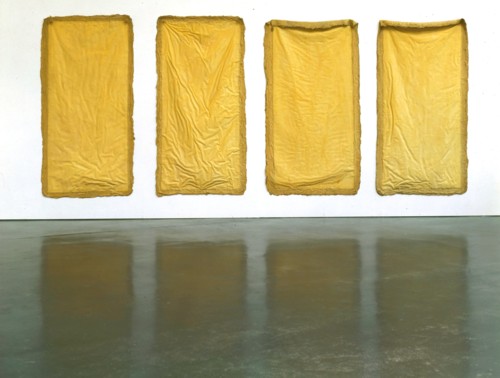So the last broadcast of This American Life was on the theme of "mistakes". Broken up into two acts, the first was a lengthy, bizarre story on the first years of cryogenics on the west coast. Without going into the details of the story (although it is a fascinating listen and I highly recommend it), the ideology behind cryogenics brought to my attention (obviously) the occurrence of death and how it is perceived in America(and possibly a large majority of the rest of the western, first world).
The main concept behind cryogenics for those who are unfamiliar is that "death" might possibly be just another form of illness that someday we may be able to cure. According to the show this idea gained popularity in the early sixties and thus led to the idea of cryogenics. So if you freeze someone in the first few moments of their death, it is assumed that someday, there will be a cure for death and these people can be "resurrected" or "reanimated".
Death is surely something that many of us have trouble coming to terms with. Perhaps this gets easier the older you get, maybe not. Furthermore, it seems to me, although I know this can be argued against, that in a first-world society we are removed/shielded from having to encounter death on a personal, intimate basis. Surely, our lives are not riddled with death due to the absence of war and disease within our immediate vicinity. Nevertheless, the fascination still remains, if not heightened by our disconnect from it, and thus I believe it could be argued that maybe this is the reason why violence is recreated and depicted so frequently in various outlets of media.
I am aware though that there is an argument that we have become desensitized to death. And with that desensitivity, cultural practices that help us to deal with death have deteriorated. (I think Heidegger has some things to say about this which I don't care to look up)
However, I would like to present that if we are so removed from death, as I believe, then it has developed a culture where our ability to understand, cope and accept death has also diminished. The outcome is perhaps ideas such as cryogenics. The outcome is also, perhaps, the development of an attitude which asserts that we exist atop some sort of constructed hierarchy which gives us more of a right to live longer(or forever) than certain"others". I feel that there are numerous events that have taken place just in the last 10 years which could be argued to be connected with the existence of such an attitude.
Finally though, my main reaction to the event of death in regards to this radio program was personal. Immediately, this idea that we could permanently "defeat" death seemed so absolutely selfish and characteristic of an attitude that the first world would produce to me. When I heard that people actually felt a right to be able to freeze someone, in order to at some time possibly reanimate them was something I immediately had a objection to. Upon further examination, I discovered that my objection was because death, to me, is something that we not only obviously all have to endure, but something that is our "duty" to endure. How dare we try and cheat death. And thus for the first time, in a long time, I feel like I came to some sort of small, epiphany on my own mortality. If given the option to live forever, or if cryogenics was much more closer to a possibility than it is today, I would clearly decline. What a strange world we live in where even the idea of never having to die has strongly been considered and undertaken...that is...if you have the money ;)
To not end on a completely dark note... take comfort in this small celebration of longevity:
Brought to my attention by my friends blog Systems of Operation, photographer Mark Story has traveled the world the last twenty-plus years in search of centenarians (people that are over 100) and super centenarians (110 years old) to get their stories and take their portraits. Its called "Living in Three Centuries: the Face of Age"
Check out the site...here is an example:
 10 year 115 day-old*
10 year 115 day-old*man of German and Irish descent.
Several of his grandparents lived past 100.
He served in the Army in World Wars I and II
and then worked as a railroad brakeman.
During the Depression
he traveled much of the country
riding the rails with hobos.
At 102, he was walking ten miles a day.
Now he walks three miles a day and can still
read the bottom three lines on an eye chart.
He gave up drinking in his 60s,
but smoked into his 80s.
He continues to work a few hours a week
at a tanning salon/espresso cafe.
He said, "I still chase
good-looking women around.
I just can't catch up with them —
my legs don't work fast enough.


